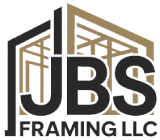Understanding the Basics of Building Materials
Choosing the right materials for your building project is crucial. Two popular choices are wood and steel, especially when it comes to framing floors. Each material offers unique benefits and has its own set of challenges. Understanding these differences helps you make informed decisions about what works best for your specific needs. This guide will explore these distinctions, providing insights that can aid in selecting the most suitable option for your construction requirements.

The Strength and Durability of Wood
Wood is a traditional choice in construction due to its natural strength and durability. It provides excellent support and flexibility, making it easier to work with during construction projects. Not only does wood offer a warm aesthetic, but it also allows for easy customization. You can cut and shape it to fit different architectural designs easily. These attributes make wooden floor framing a preferred option for many builders seeking both practicality and visual appeal.
Advantages of Using Steel for Structural Support
Steel stands out for its superior strength-to-weight ratio. This characteristic allows it to bear heavier loads compared to wood, which is particularly advantageous in larger buildings where structural integrity is paramount. Additionally, steel is resistant to termites and rot, ensuring longevity without extensive maintenance. Builders often choose steel for floor framing because of these factors and its ability to withstand harsh environmental conditions more effectively than wood.
Cost Considerations in Material Selection
When planning any construction project, budget plays a critical role in decision-making. Initially, wood tends to be less expensive than steel. However, you must consider long-term costs related to maintenance. Wood may require treatments against pests and decay, adding to overall expenses over time. On the other hand, although steel’s upfront cost might be higher, its durability could result in fewer repair costs, offering potential savings in the long run.
Sustainability and Environmental Impact
Sustainability often influences modern construction practices. Wood is a renewable resource if sourced from well-managed forests. Its use supports eco-friendly initiatives by reducing the carbon footprint associated with construction. Conversely, steel production involves significant energy consumption and greenhouse gas emissions. Nevertheless, steel is recyclable, which mitigates some environmental concerns by allowing reuse in various applications.

Installation Process: Wood Vs. Steel
The installation process varies significantly between wood and steel structures. Working with wood typically involves simpler tools and less specialized skills, enabling quicker assembly times on-site. In contrast, steel requires precision equipment and experienced labor to ensure proper alignment and safety during installation. For those prioritizing ease of construction, wood might seem favorable; however, steel’s robustness might outweigh initial complexities for projects demanding high resilience.
Best Practices When Choosing Construction Materials
- Evaluate the specific load-bearing requirements of your project.
- Consider environmental conditions that might affect material performance.
- Assess long-term maintenance and associated costs.
- Weigh the importance of sustainability in your decision-making process.
- Consult with experts to gain insights into local building codes and regulations.
Making an Informed Choice With Your Building Project
Your choice between wood and steel should align with your project’s specific needs and constraints. We at JBS Framing LLC understand the critical factors involved in this decision-making process. Based in Caldwell, ID, our team offers expert advice tailored to your construction goals. Contact us today at (208) 941-0081 for personalized guidance on choosing the right materials for successful outcomes.
